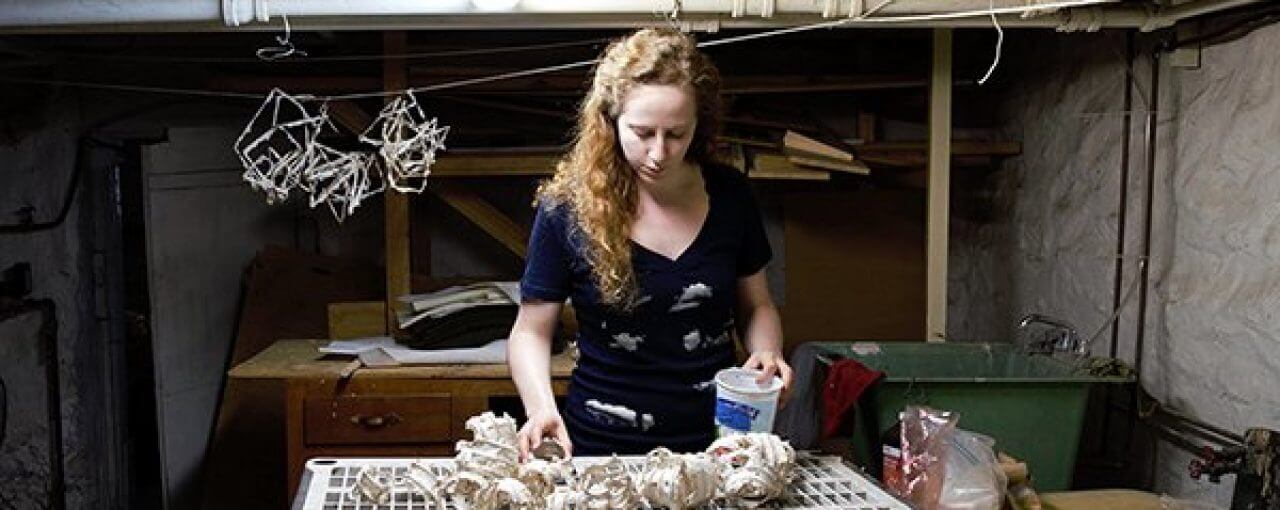See Vogel’s work in WTP Vol. VI #6
Inside the Studio offers a behind-the scenes peek into the work environments of WTP artists, as well as insight into their creative process within these resonate spaces.
By Jennifer Nelson, WTP Feature Writer
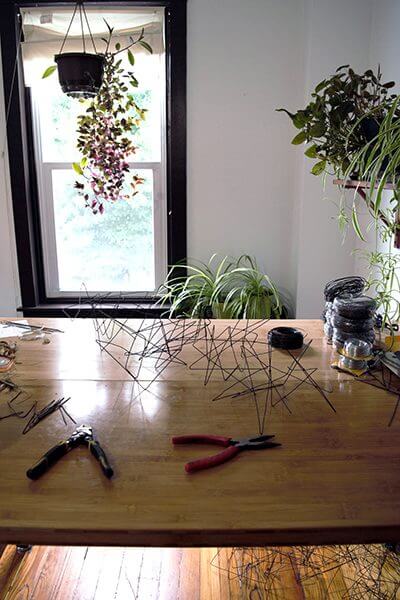
In the past year, Hanna Vogel has been busy. She finished her MFA at the University of Massachusetts, Dartmouth, attended several artist residencies, and reconfigured her studio to accommodate large installations and sculptures.
In her Philadelphia home, Vogel converted a spare bedroom into a studio. She divided the room into two sections: one smaller area where she makes individual objects, and another larger one where she arranges installations. In the smaller space, which boasts windows and houseplants, she builds modular pieces. This doesn’t require that much space. On the walls are pieces of paper, where she’s written down ideas, words and phrases related to what she’s making. In the larger area, she has room to work out ideas for her fiber art.
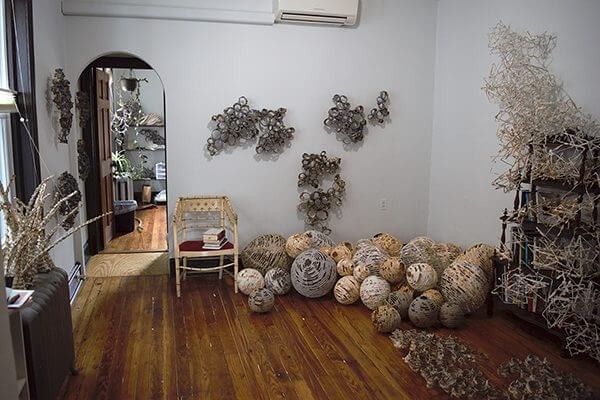
In her basement, she does paper-pulp pouring work. It has a cement floor—perfect for this messy job. “I end up carrying lots of components up and down the stairs from the production space to the pulp-pouring space to the installation area,” she said.
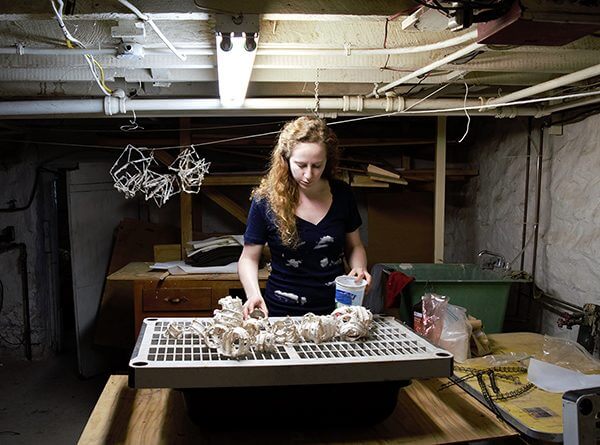
Vogel starts work at her studio between 8:30 and 9:00 a.m. She then leaves for her day job, but returns to the studio from 3:30 to 7:00 p.m. After dinner, she’ll usually work a little more. She focuses on only one big project at a time, developing a new idea, making pieces, and then installing them. She starts with a small maquette, and before long, her studio is taken over by materials. For her wire-and-paper artwork, Vogel uses 16-gauge, annealed-steel wire and 26-gauge copper wire. She begins by weaving forms, then pours a mixture of abaca and cotton paper pulp over them. Paper fibers must be prepared in a Hollander beater –a machine that produces paper pulp from plant fibers. Several recent grants allowed her to buy her own beater.
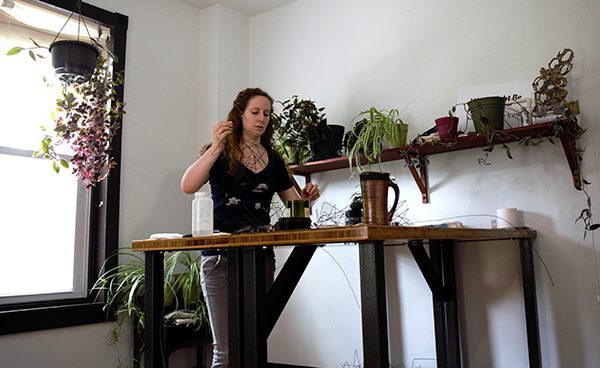
After completing the modular parts for an installation, she goes back to creative problem solving. This means figuring out how to attach pieces together, then arranging them into a whole, though in the initial idea and maquette phase, she tries to work out as much of the physics and attachment details as possible. Then during the first installation, she resolves unforeseen issues. She always does at least one trial run of a new piece before installing it for a show: “This last stage of the process is the most cathartic and aesthetically creative. But it’s also a bit scary. as I see the work coming together to embody my original idea.”
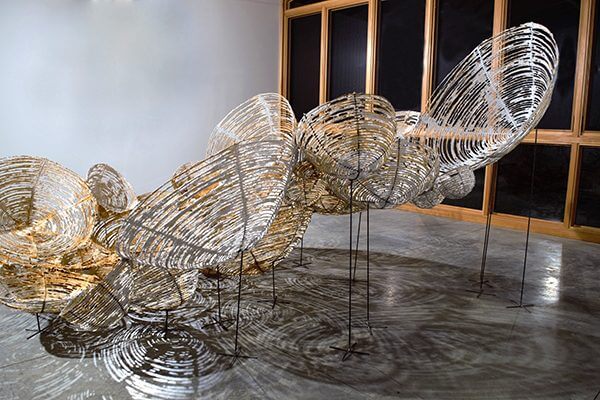
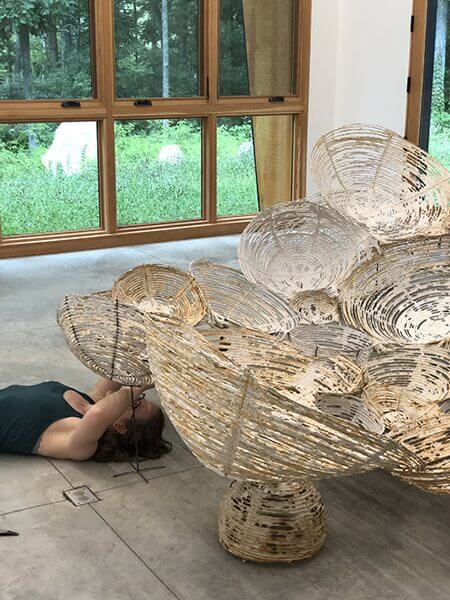
With a home-based studio, she doesn’t spontaneously collaborate with other artists. Thus, she values her residency stays: “I love the moments of finding conceptual overlap between my work and that of someone who works in an entirely different discipline.” Residencies also provide her with tools and equipment she doesn’t necessarily have at home—and larger installation space. At Yaddo in Saratoga Springs, New York, and I-Park in East Haddam, Connecticut, she had access to welding equipment to make armatures for fiber sculpture; and at Furman University in Greenville, South Carolina, electric kilns to get back into ceramic sculpture. “What I make often depends on the facilities and spaces where I’m working at any given time,” said Vogel. “I also get a lot of my aesthetic inspiration from the environments and spaces around me, so working in new and unfamiliar places really feeds into my work.”
Copyright 2018 Woven Tale Press LLC. All Rights Reserved.

